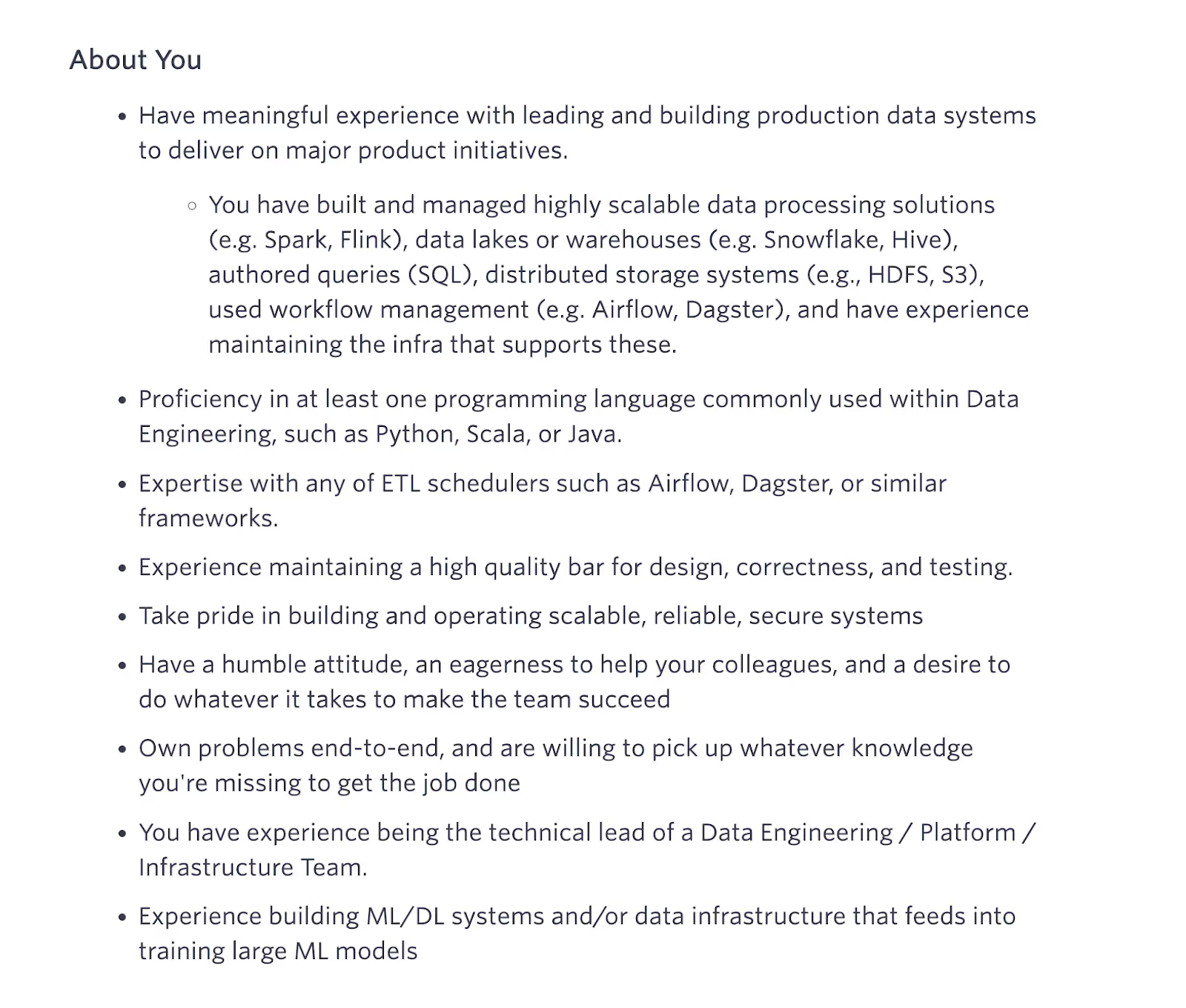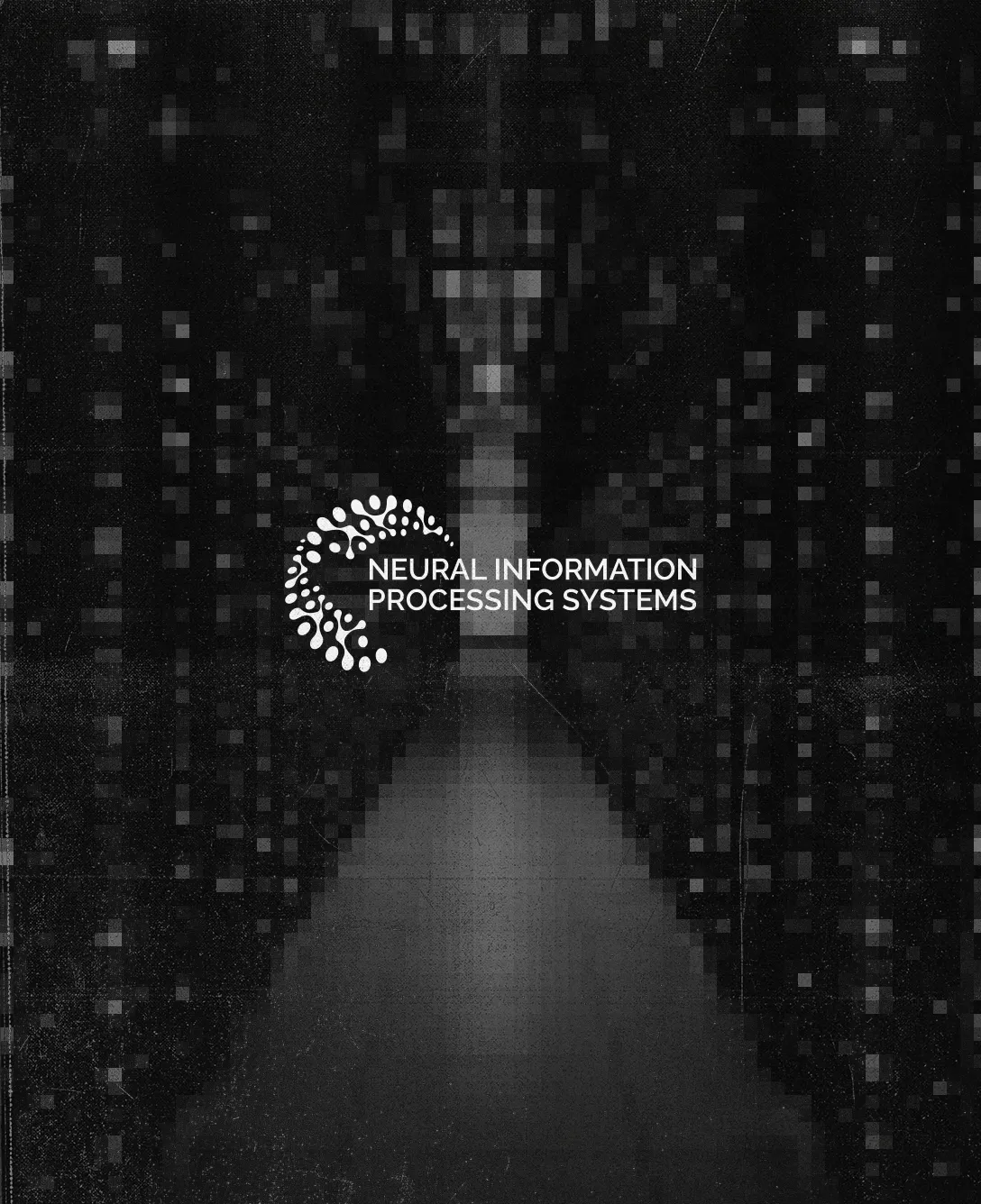
The most overlooked part of hiring for a role: the prep
Once you've figured out what roles you want to hire, it’s time to figure out what kinds of people are going to fill those roles. Here, the great temptation arises to go on your founder’s gut, which unfortunately often means hiring based on “vibes”. I don’t want you to dismiss your intuition by any stretch, but rather, operationalize those vibes a bit.
Like when you are building a product and developing the right features, being precise and systematic will help you hire faster and better.
Here’s how:
- Practice thinking in terms of core competencies.
- Identify experiences that map to core competencies.
- Test your assumptions against the market.
Core competencies—what do you actually need?
A formal definition goes something like this: core competencies are a mix of skills, traits, and areas of expertise that someone excels at. In plain English, it’s what a person needs to get the job done. Think of it like essential features of a great product. This involves both hard skills like programming in Rust (or, as we are about to see, ability to learn Rust quickly), and soft skills like being able to work well with other humans.
For hard skills, think: can they do the job? Be careful not to be overly selective—consider the underlying skill set rather than the output. For example, maybe you are looking for an engineer who codes in Rust, as that’s what you use to build your product. You could list “proficiency in Rust” as a core competency, but this will narrow your field. In reality, you want the engineer to be proficient in a systems programming language and able to learn Rust quickly. You may target people who know Rust, as well as folks who code in C or C++ and are excited to learn Rust.
When it comes to soft skills, think: can they do the job in this company and with this team? There is a tendency to oversimplify soft skills to things like “ability to work with others effectively”, or “great communicator”. In the startup context‚ especially early on, you need to ask yourselves deeper questions and operationalize these soft skills a bit further:
- Will they figure things out? How much ambiguity will this person have to deal with?
- What drives this person? Will they be inspired by contributing to the business or trying out awesome new tech?
- What other areas of the business will this person need to be able to flex into?
- Can you and your team work with them? The success of an early engineer will depend on this just as much as their knowledge of Rust.
Aim for a list of 5-7 core competencies per role. The longer your list, the more difficult it will be to find and attract talent for that role. For every competency you list, ask yourself: Why is this competency meaningful? How will it materially help us achieve our goals?
Identify the kinds of experience that map to your competencies
With a good understanding of your core competencies, you should now work backward to determine how to find people who actually have them. Your job is to identify the experiences that lead someone to acquire said competencies. Basically, what kind of background are you looking for (and how does it present in real people)?
- As you translate your core competencies into the required experiences, consider the candidate’s level of seniority and career slope. You want someone who is getting promoted quickly and taking on more ownership and scope ahead of the curve. Those are the hires who will punch above their weight.
- Focus on aptitude, not just tenure. You can write requirements like “5+ years of experience in X programming language,” but this is limiting. Another way to think about this is “5+ years of experience writing high-quality production-level code in any language, with an interest to learn and the ability to ramp quickly on X programming language.”
- Distinguish must-haves from nice-to-haves. Figure out what’s really going to move the needle for you. What will cause you to eliminate someone from the running if they don’t have this skill, versus what’s desirable but not necessarily critical? This seems obvious, but I see founders fail to make a distinction here all the time, and they end up cutting great folks from their process because they didn’t meet all the “nice to haves” while they would have crushed the “must haves.”
Example: Datology
I know I mentioned not to get ahead of yourself and jump into a job description. But what we can do is find some useful examples from companies who have already gone through these exercises and distilled their findings into a good JD.
A great example of how to focus on competencies is Datology (an Amplify company!). In their Software Engineer, Data Infrastructure posting, they focus on seven competencies.

When they say they want someone who has “meaningful experience with leading and building production data systems to deliver on major product initiatives,” they give examples of what that means in practice and list different technologies that may showcase that skill. Their focus is on the impact the role will have on their product, and they are open to different ways of achieving that impact. The soft skills they list are particular to their company, stage, and team.
Test your ideal candidate profile assumptions by looking at the market
The core competencies and experiences you’re looking for are all theoretical at this point. To figure out what’s actually in the market and available, you’ll need to test your assumptions by looking at real candidates. You’ll need to be open to adjusting your plan if you find that this ideal unicorn you’re looking for…just doesn’t exist.
By the way, I believe this particular order—decide on competencies and experience, then test the market—is very important. A lot of hiring plans start with “just looking at profiles” aimlessly; checking profiles out first, before establishing what and who exactly you need, often distracts founders from what the business actually needs and how to get it.
To nail this step, first, search for profiles of folks that would excel in this role. Do so by translating the requisite competencies into keywords to surface the right talent for the job. This will help you test your ideal profile against the reality of the market. I'll explain more about this kind of sourcing later in an upcoming post.
So…how do you test the market? The question you’re trying to understand is: how do those competencies and experiences you need manifest into a real person?
- If you’ve listed so many skills that there’s no one on the market that qualifies, go back and ask yourself: Which of those skills actually matter?
- If you find there’s too wide a range of talent that could fit this role, consider drilling down a little deeper. What other competencies could you add to your list to uncover a more qualified shortlist of potential candidates?
Every time you identify someone who’d be a good fit for your role, ask yourself again if that person is right not only for the product you’re building, but also for the stage you’re at. I consistently see Amplify companies get fixated on an incredibly experienced candidate with big-company experience, only later realizing that they’re not cut out for an early-stage startup environment. If you’re still thinking about a remarkable colleague you worked with at Meta, but their experience or soft skills won’t transfer to your seed-stage company, consider what made that person so effective in their role. Then ask how you’d find those skills in someone who’d do great work at the early stage.
Now you have your ideal candidate in mind, it's time to switch gears and think about how to present your company as their ideal employer—stay tuned for a future post.



